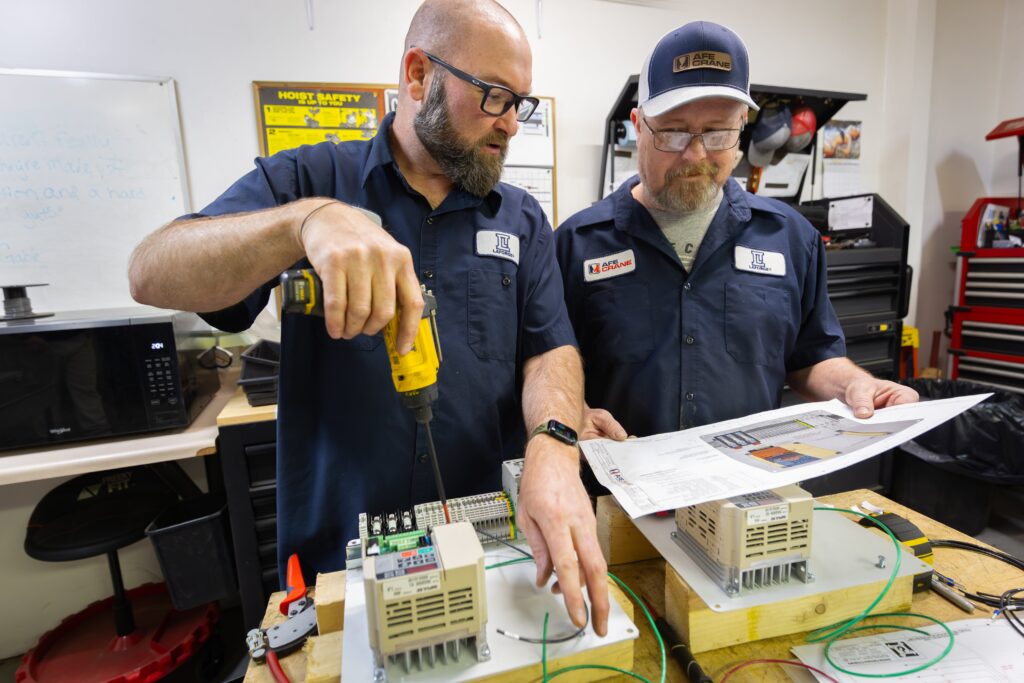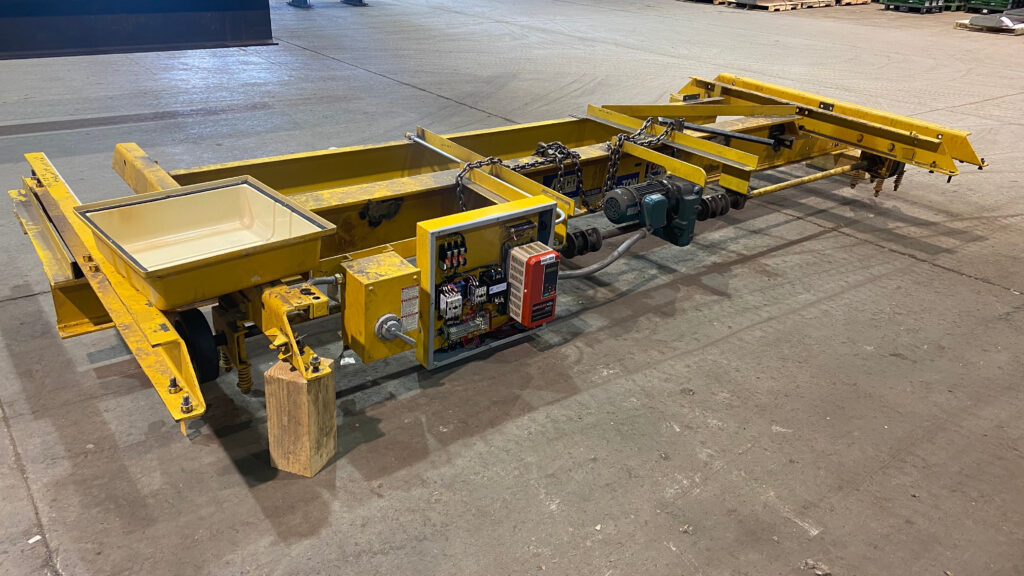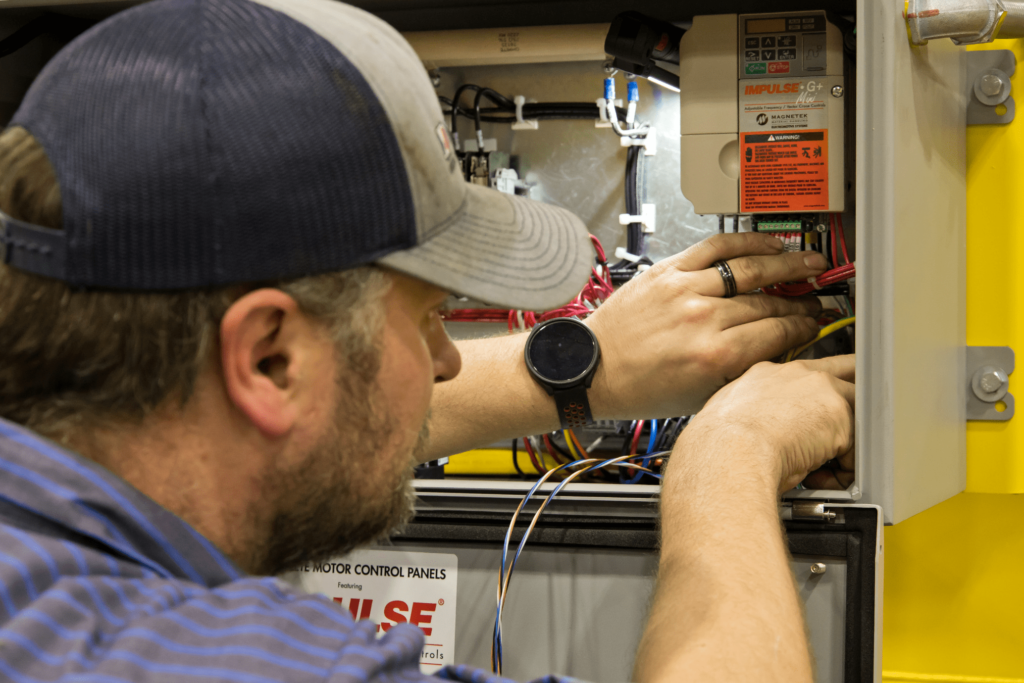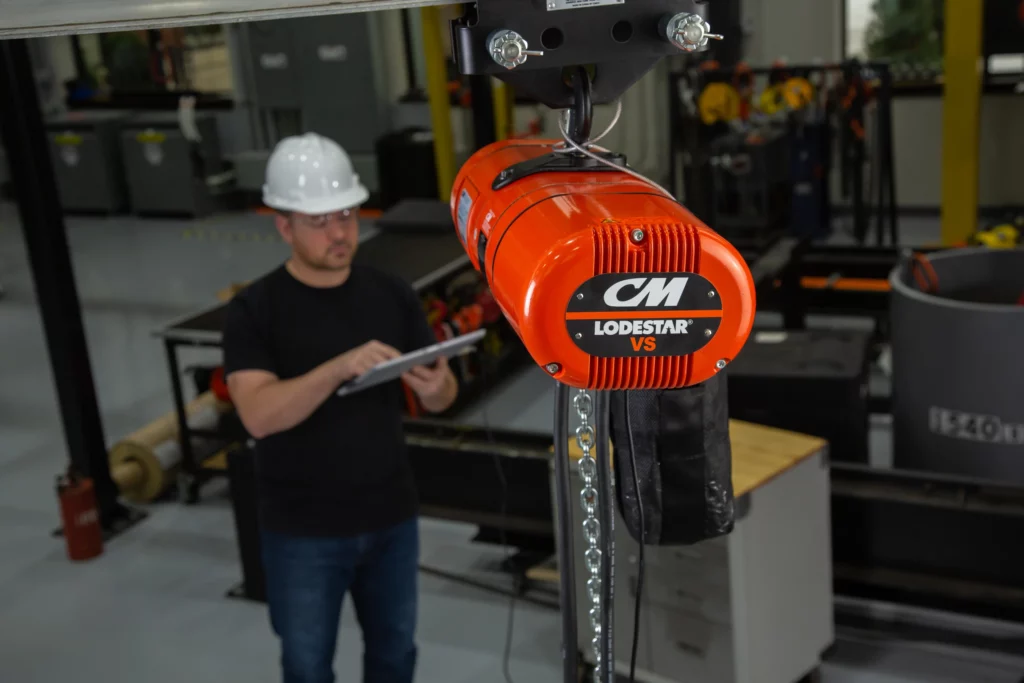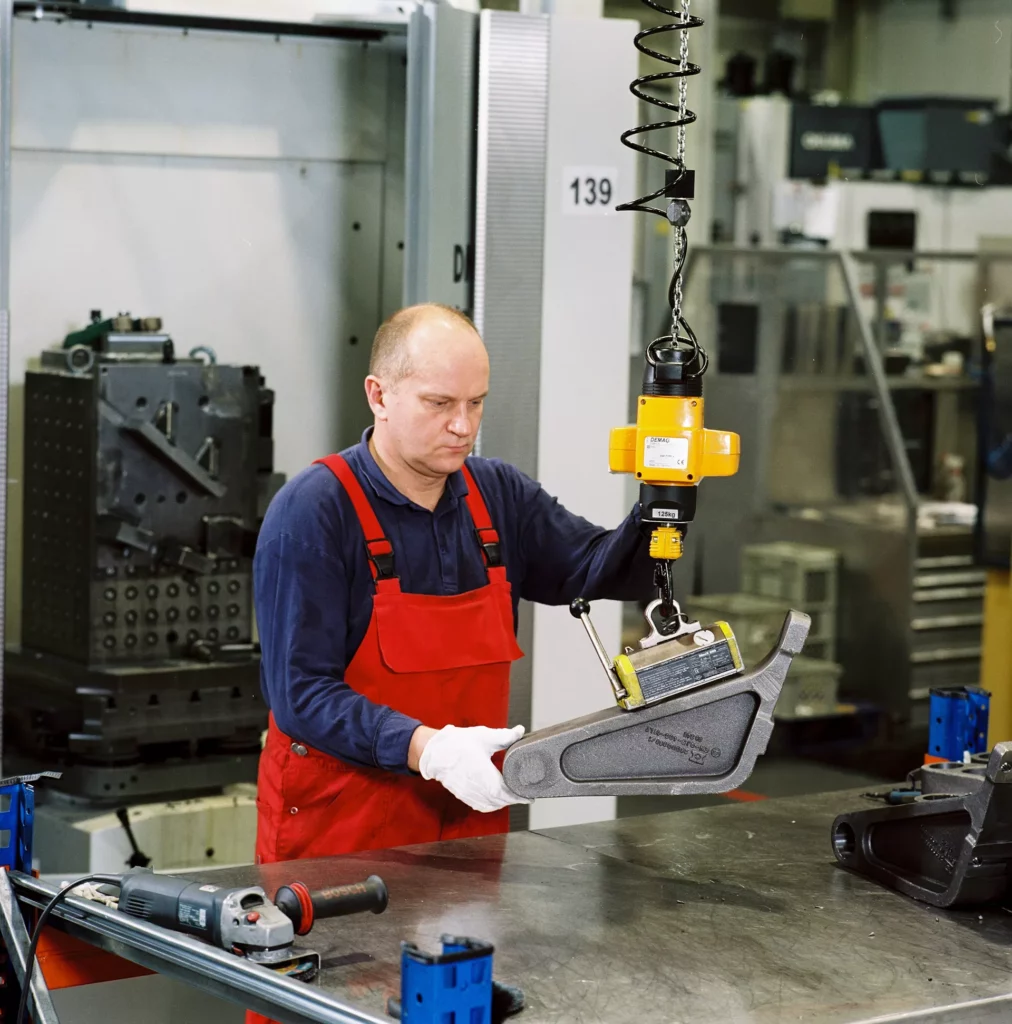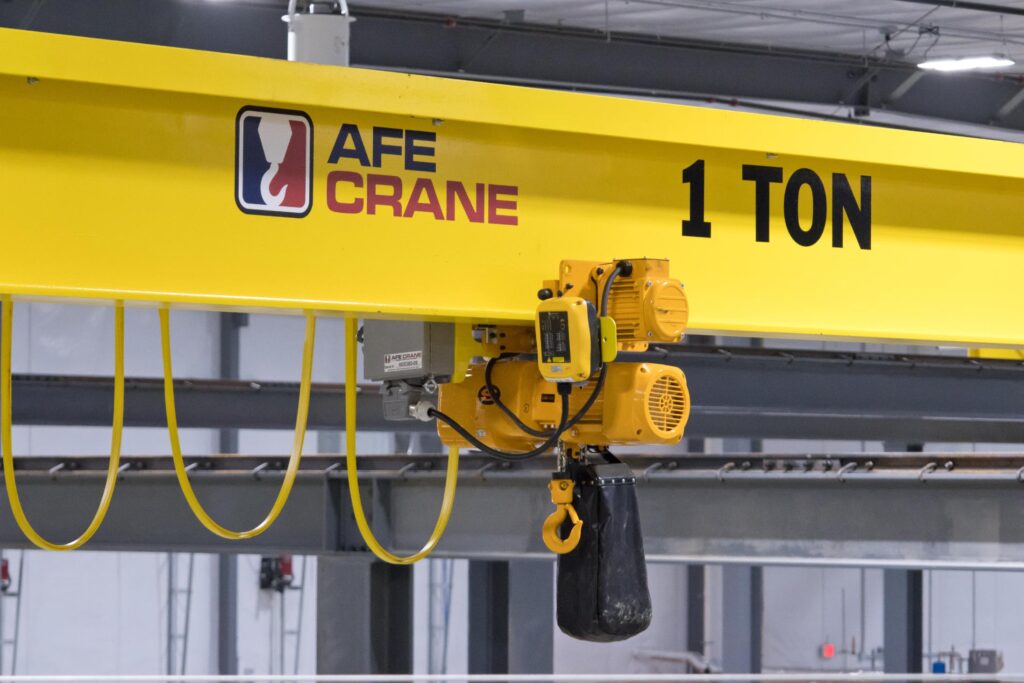Overview
Choosing the right control system is essential for overhead crane performance. In this article, we’ll compare VFD vs Two-Speed Controls—including one-speed and two-speed options. Each type of control affects precision, efficiency, safety, and long-term reliability in different ways. Learn more about our Crane System Controls that support both standard and advanced applications.
One- and Two-Speed Controls
One- and two-speed controls are the most traditional crane control methods. A one-speed system runs at a single fixed speed for lifting, lowering, or traveling. These systems are economical and effective for light-duty use where precision is less important.
Two-speed systems add flexibility with both a “fast” and a “slow” setting. This lets operators move quickly when needed but slow down for load placement. They work well in standard applications but still rely on fixed speeds. Because of that, they can create jerky transitions, less precise control, and more wear on motors, brakes, and gearboxes.
For some facilities, upgrading from two-speed to VFD controls can be part of a larger Modernization Service plan to extend crane life and improve safety.
VFD Controls
Variable Frequency Drive (VFD) controls improve performance with smooth, stepless speed adjustment. By varying the electrical frequency to the motor, VFDs allow gradual acceleration and deceleration. This reduces load swing, increases accuracy, and gives operators more confidence.
VFD systems also extend equipment life. Smooth starts and stops reduce strain on mechanical parts, lowering long-term maintenance costs. Another benefit is efficiency. VFDs match motor output to the actual load, which lowers energy use compared to fixed-speed systems. For hoist performance, see how our Hoists integrate seamlessly with advanced controls.
Comparison: VFD vs Two-Speed Controls
To highlight the differences more clearly, here’s a side-by-side comparison:
One-/Two-Speed Controls
- One or two fixed speeds (fast/slow)
- Simple and economical upfront
- Limited precision, jerky transitions possible
- More wear on motors, brakes, and gearboxes
- Higher energy use — fixed output
- Best for light-duty or budget-focused applications
VFD Controls
- Stepless, adjustable speeds
- Smooth acceleration and deceleration
- Greater precision and reduced load swing
- Extends life of motors, brakes, and gearboxes
- Matches motor output to demand, saving energy
- Best for heavy-duty, precision, or safety-critical applications
Key Considerations
When deciding between VFD vs Two-Speed Controls, keep these points in mind:
-
Application demands: One- and two-speed controls fit basic, light-duty systems. VFDs suit heavy-duty or precision lifting applications.
-
Precision requirements: VFDs improve accuracy and minimize load swing, making them the safer choice when precision matters.
-
Operator experience: Two-speed controls are simple and familiar. VFDs, however, give operators smoother control during complex lifts.
-
Equipment longevity: Because VFDs reduce stress on motors and brakes, they extend the life of key components.
-
Budget considerations: Fixed-speed systems are less expensive upfront. VFDs cost more initially but often save money through lower maintenance and higher efficiency.
-
Energy efficiency: Only VFDs can adjust motor output to match load demand, reducing operating costs over time.
Conclusion
Understanding the differences in VFD vs Two-Speed Controls helps ensure you choose the right option for your lifting application. At AFE Crane, we work closely with customers to design crane systems that meet their exact performance, safety, and efficiency needs—whether that means a basic two-speed setup or a fully integrated VFD system. Learn more about our Custom Engineered Solutions for best practices in control design.
